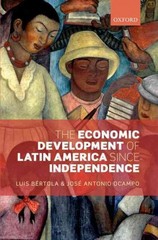Question
Answer the questions below well: Draw a diagram showing the demand D and supply S curves for a good. Show the equilibrium price by P1
Answer the questions below well:
Draw a diagram showing the demand D and supply S curves for a good. Show the
equilibrium price by P1 and the equilibrium level of sales by Q1 .
(ii) On your diagram draw the line S T to show the new supply curve after an excise tax of T
is imposed on the good. Denote the new equilibrium price and quantity by 2P and Q2 .
(iii) Show clearly on your diagram consumer and producer surplus before and after the tax,
the government revenue and the excess burden (ie net welfare loss) from the tax.
Discuss the advantages and disadvantages of price ceilings and price floors.
Your discussion should include examples. Illustrate your answer with the aid of appropriate
diagrams.
Explain how the following examples of collusion between firms are detrimental to consumers:
(i) horizontal price-fixing agreements
(ii) agreements to share out markets
(iii) agreements to limit production
(iv) bid rigging.
Which of the following is NOT a reason why market forces fail to generate sufficient research and
development activity?
A Some firms may try to copy the ideas of other firms.
B Firms will try to gain a competitive advantage over other firms in the market.
C Firms may duplicate other firms' research.
D The benefit to the firm of a particular piece of research is uncertain.
Which of the following would NOT be likely to increase the amount of research performed?
A the introduction of a patent system
B increased funding to universities
C introduction of a tax on firms' research spending
D subsidies to firms conducting R&D
10.12 (i) Outline the reasons why the market may fail to provide an environment in which
technological change can thrive. [3]
(ii) Outline how the government may intervene in the market to encourage firms to
undertake research and development.
Suggest ways in which governments could regulate monopolies and oligopolies.


Step by Step Solution
There are 3 Steps involved in it
Step: 1

Get Instant Access to Expert-Tailored Solutions
See step-by-step solutions with expert insights and AI powered tools for academic success
Step: 2

Step: 3

Ace Your Homework with AI
Get the answers you need in no time with our AI-driven, step-by-step assistance
Get Started


